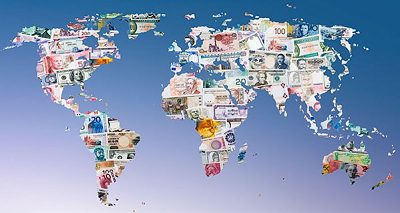It’s never too early to look ahead when considering future global strategies. That said, 2030 could be a very good year for retailing in emerging markets. But it could just as easily be a disastrously bad year — with a difference of $5.5 trillion between the most optimistic and pessimistic forecasts.
Retailers, particularly the growing number with ambitions for global expansion, recognize the importance of emerging markets in regions including sub-Saharan Africa, South Asia and Latin America. Both long-term trends (e.g. climate change) and short-term political shocks (such as the UK’s decision to “Brexit” the European Union) will affect retailers’ ability to reach the large numbers of people in these markets who will be hungry for consumer goods and services.
In the best-case scenario for the next decade and a half, sales grow 4.4% per year to reach more than $17.8 trillion in 2030, nearly double the 2015 total of $9.2 trillion. But in the worst-case scenario, sales rise much more slowly, reaching only a little more than $12 trillion. That’s according to a new report from global consulting firm A.T. Kearney, titled: Emerging Market Retailing in 2030: Future Scenarios and the $5.5 Trillion Swing.
Advertisement
“Retailers must plan for multiple futures and be nimble enough to pursue diverse strategies as the business environment in emerging markets evolves,” said report co-author and A.T. Kearney partner Hana Ben-Shabat in a statement. “Through this combination of foresight and agility, retailers can seize opportunities no matter what the future holds.”
Intersection Of Politics, Economics And Technology Adoption
A.T. Kearney’s analysis factors in key events such as the implementation of the Trans Pacific Partnership trade agreement, China’s slowing economy and GDP growth in emerging markets. Emerging market sales are then projected as a function of GDP.
The study identifies three global forces of change that will define business in 2030:
• Rising geopolitical instability: This includes conflicts in the Middle East and the ensuing refugee crisis, Western sanctions on Russia and U.S.-China power struggles in the South China Sea;
• Persistent economic uncertainty: Emerging market economies in Africa, the Middle East and South America are already suffering from lower demand from China, falling commodity prices and a dramatic drop in oil prices; and
• Accelerating technological adoption: e-Commerce growth in emerging markets has transformed these retail landscapes for better and for worse, with many retailers taking advantage of it as a low-capital, low-risk way to enter markets and/or expand into rural areas.
“How these forces play out will be central to how retailers optimize their international portfolios going forward,” said Erik Peterson, an A.T. Kearney partner and co-author of the report. “There are two high-impact, high-uncertainty factors that have the potential to transform international retail: the degree to which emerging markets will be open to business, and the degree of technology adoption in those markets.”
Back To The Future(s)
The report uses a scenario-based approach around these two major change factors, generating four plausible futures — each with vastly different implications for international retailers. The scenarios are:
1. Seamless Dreams. In this scenario cross-border integration and rapid technology adoption create a highly favorable environment for international retail expansion.
2. Back To The Past. Insular politics, economic recession and a lack of technology infrastructure force international retailers to return to their home markets.
3. Urban Rise, Rural Demise. Governments embrace open trade, but consumer backlash against technology limits retailers to urban centers.
4. The Technology Wedge. This scenario describes a fragmented society in which only countries with pre-existing physical and digital resources offer expansion opportunities.
“The global retail landscape can anticipate billions of new middle-class consumers over the next decades in sub-Saharan Africa and South Asia, and technology can help us serve them profitably — or not,” said A.T. Kearney partner Mike Moriarty, another co-author. “Consumers everywhere want healthful and nutritious food and personal care products to enhance their health and well-being, and they want these to be accessible and affordable. Global retailers play an important role in making this happen, but government and social policy will have a big impact on their ability to lead and succeed.”









